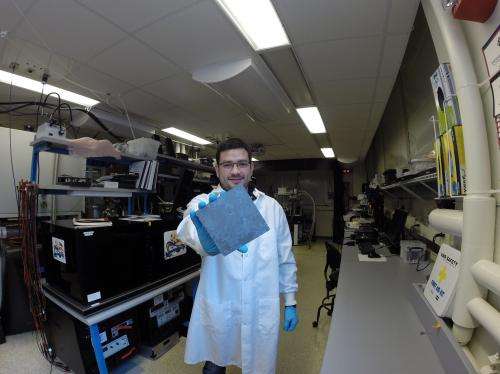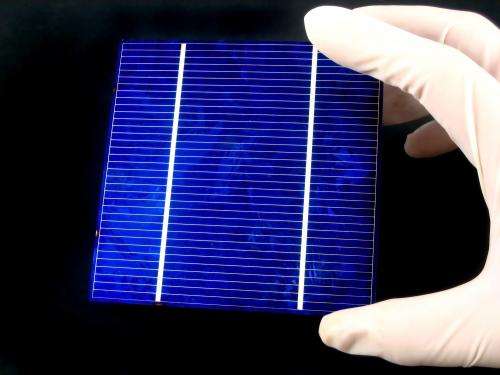Researcher identifies defects in solar cells made of silicon

Since he was a teenager, engineer Sergio Castellanos had the desire to study abroad to prepare and do research in the best laboratories, particularly on solar energy. With six years of study in the United States, first at the University of Arizona and now at the Massachusetts Institute of Technology (MIT) in Boston, his dream has come true: "I am working on defects found on silicon and their impact on the efficiency of solar cells made with this material," he says. This research is toward his doctorate from MIT.
"Dislocation is a defect that occurs at high temperatures, of 500 ° C onwards. In my research, I analyze these defects and their impact on the efficiency of solar cells made from silicon, since this material is used in over 90 percent of solar panels worldwide ".
The Mexican researcher explains that the harmful part of the dislocation is interacting with other defects such as metallic impurities within the material of solar cells; they tend to reduce efficiency by such things as interacting with electrons.
"It is very easy for impurities to settle into a defect in the material. Therefore, in my research, I analyze what kinds of dislocations will be more harmful to the cells, meaning, which ones will interact more with impurities, because not all do likewise, hence not all dislocations are equally harmful."

Castellanos proposes a method applied in wafers of polycrystalline silicon before being processed into solar cells. This method involves using a chemical treatment in order to view the dislocations and analyze the geometric variation on the surface. After making crystallographic analysis as well as X-rays for determining the distribution and concentration of metal impurities, a correlation is made with the geometric appearance of the surface and then, just by looking at the surface, one can deduce what the electrical behavior within material will be.
"The goal is to identify which areas of the material will be more likely for electrons to recombine before being extracted by contacts, becoming less efficient cells."
A little bit of history
When the native of Hermosillo, Sonora (northern state of Mexico), was in high school, he applied to MIT and was not admitted. He told himself he would not be discouraged because surely the opportunity would could come later. He decided to study mechanical engineering at the Technological Institute of Hermosillo and two years in, his parents supported his studies abroad.
He was transferred to the University of Arizona where he finished his degree. At the university, he became involved in several projects on the subject of energy, as was the case with hydrogen cells, a solar car and installing solar panels.
The Mexican says he enjoyed doing research and started looking for projects and teachers who worked in that area. He spotted four scientists, but wanted to go to MIT because "for any engineer to be in this school is a dream. I had practice in energy research during my bachelor's and for my doctorate I looked for subjects in this area. I applied at several universities and at last I was admitted at MIT in Boston."
His research in solar cells is in the last stage, and once completed, he will make it available to other researchers. This work was presented at various conferences and has received good reviews in terms of utility.
To "finish the tale" on solar cells, the Mexican will complete his studies in six to eight months, and is more than satisfied with the subject that has developed during his research.
Sergio Castellanos wants continue researching, work in an industry and does not rule out to eventually move to another country. In the remaining months he will define his next step.
Provided by Investigación y Desarrollo





















